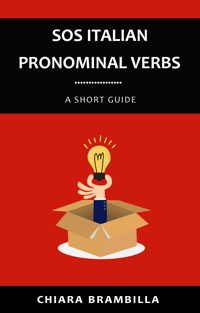
Learning Italian from scratch can be an exciting and rewarding journey. Whether you want to travel to Italy, connect with your heritage, or simply enjoy the beauty of the language, developing a solid learning strategy is essential. This guide will provide you with practical tips, estimated time commitments, common challenges, and suggests some resources to help you progress efficiently.
1. Daily Commitment: How Much Time Should You Spend?
Consistency is key when learning Italian from scratch. Even if you have a busy schedule, dedicating at least 30 minutes per day can yield significant progress over time. If your goal is to become fluent, a more intensive study plan (1-2 hours per day) will accelerate your learning.
Here’s an estimated timeline for reaching different proficiency levels according to the Common European Framework of Reference for Languages (CEFR):
- A1 (Beginner): 80-100 hours
- A2 (Elementary): 180-200 hours
- B1 (Intermediate): 350-400 hours
- B2 (Upper Intermediate): 500-600 hours
- C1 (Advanced): 700-800 hours
- C2 (Fluent/Native-like): 1000+ hours
These estimates vary based on factors like language background, study methods, and immersion experiences.
2. The Best Approach to Learning Italian
Start with the Basics
It seems obvious, I know, but you have no idea how many people I’ve met who wanted to be fluent in Italian, understood Italian quite well, but could only speak using nouns or infinitives. In short, they didn’t know the basics needed to build a correct sentence in Italian. And that’s a pity, because if you repeat a sentence long enough, you’ll convince yourself it’s correct—even when it’s not. Soon enough, it becomes harder and harder to replace these bad habits with correct ones. So, please, do yourself a big favour and start from the basics. I know they can be boring, but they’ll save you a loooot of time later on.
- Learn common phrases and greetings (e.g., “Buongiorno,” “Grazie,” “Come stai?”)
- Master basic grammar structures (articles, pronouns, and verbs like “essere” and “avere”)
- Build a vocabulary of essential words used in daily life (food, family, travel, etc.)
Use Multiple Learning Methods
To make learning more effective, combine different techniques:
- Apps like Duolingo, Babbel, and Anki for vocabulary and grammar practice
- Textbooks such as “Italian for Beginners” or “Practice Makes Perfect: Basic Italian”
- Podcasts, YouTube & Songs (e.g., “ItalianPod101” or “Learn Italian with Lucrezia”)
- Music & Movies with subtitles for listening practice
Practice Speaking as Early as Possible
Speaking is often the most challenging skill to develop when you start learning Italian from scratch, but the sooner you start, the better. Try:
- Language exchange partners (via platforms like Tandem or HelloTalk)
- Online tutors (italki, Preply, or local language schools)
- Speaking to yourself (narrate your daily activities in Italian)
3. Common Challenges and How to Overcome Them
1. Pronunciation Difficulties
Italian pronunciation is generally straightforward, but some sounds (like “gli” in “famiglia” or “r” rolling) may be tricky.
- Solution: Listen to native speakers and imitate their pronunciation. Use resources like Forvo to hear words pronounced correctly. If you still have problems pronouncing the sound “gli”, you can find some exercises that help you master this sounds in my online course: Sos Italian Grammar in Action.
2. Verb Conjugations
Italian verbs change depending on the subject and tense, which can feel overwhelming.
- Solution: Focus on mastering the most common verbs first (essere, avere, fare, andare, venire). Use flashcards and practice writing and saying simple sentences.
3. Understanding Native Speakers
Spoken Italian is often faster and more fluid than textbook Italian.
- Solution: Listen to slow-spoken Italian podcasts and repeat what you hear, or educe the speed of YouTube videos. Then, gradually start watching TV series—preferably ones with more than three seasons—so you can get accustomed to the characters, their way of speaking, and so on.
4. Fear of Making Mistakes
Many learners hesitate to speak because they fear making errors.
- Solution: Remember that mistakes are part of the learning process. Practice in a supportive environment, and don’t be afraid to ask for corrections.
4. Immersing Yourself in the Language
Even if you don’t live in Italy, you can create an immersive learning experience:
- Change your phone and social media language settings to Italian
- Follow Italian influencers or news pages (e.g., “La Repubblica” or “Rai News”)
- Join online Italian communities (Reddit’s r/italianlearning or Facebook groups)
- Plan a trip to Italy (nothing beats real-life exposure!)
5. Final Tips for Success
- Set realistic goals: Instead of saying, “I want to be fluent,” set specific goals like “I want to have a 10-minute conversation in Italian in three months.”
- Track your progress: Keep a journal where you write in Italian every day.
- Be patient and enjoy the process: Language learning takes time, but every small step brings you closer to fluency.
Conclusion
Learning Italian from scratch requires dedication, but with a structured approach and daily practice, you can achieve impressive results. Focus on speaking early, use a variety of resources, and don’t be afraid to make mistakes. Most importantly, have fun with the process—learning a new language is a journey, not a race!
Buona fortuna e buon apprendimento! (Good luck and happy learning!).
If you found this article useful, don’t forget to share it with the world and to like our Facebook Page!
Credits:
Image by Copilot





 Seven similar Italian words that can trick you
Seven similar Italian words that can trick you

